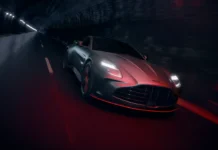
Over 100 Tesla owners have complained to the NHTSA about their cars “phantom braking”.
Earlier this week, the automaker sent documents to the U.S. safety agency, saying it will soon disable the Full Self-Driving system’s capability to roll through stop signs at slow speeds. Now, as the Washington Post reports, owners are filing complaints about their cars suddenly braking for non-existent hazards. That is a startling and potentially dangerous phenomenon, as the erratic nature of the problem could inadvertently cause a crash. Finally, though a relatively minor issue, the National Highway Traffic Safety Administration also published documents noting a new recall covering some 817,143 vehicles — nearly one-third of all vehicles the company has ever built.
What’s happening with unexpected automatic braking?
The timing of the phantom braking complaints, totaling at least 107 as of January 2022, seems to coincide with Tesla’s changeover to a fully camera-based driver assistance system. Newer models do not use radar sensors to supplement the camera data, which drivers and safety experts posit could be a contributing factor to the problem, according to the Washington Post’s piece. Tesla says its camera system provides 360 degrees of visibility up to 250 meters around the car.
While it does also use a dozen ultrasonic sensors to interpret objects, owner reports note the “Tesla Vision” system may be overly sensitive to certain obstacles, like large trucks.
One of the latest available NHTSA complaints filed on February 1 lays out the problem in direct terms:
“The adaptive cruise control system is very dangerous due to constant “phantom braking” problems. With cruise control enabled, the car will randomly slow down, sometimes gradually and others times rapidly. Sometimes the deceleration happens when passing a large truck, or a car on the other side of the road. Sometimes it is in response to shadows on the road. Sometimes there is no discernable (sic) reason. Instances of rapid and unexpected deceleration make it likely we will be hit by another car or otherwise cause an accident.
This problem is prevalent throughout all Model Y cars and detailed online. Dealers say that there is nothing wrong with the vehicle and they hope it can be fixed in the future by software. However, in the meantime, the dangerous situation exists. My vehicle has not been inspected by anyone for this purpose, at least not yet. There are no warning lamps or messages when this happens.”
Complaints are not independently verified by the agency, though it has acknowledged it is in discussions with Tesla regarding owners’ phantom braking reports. At this point, Tesla has not made a public statement on the matter, and does not currently have a public relations department.
Tesla did recall their Full Self-Driving software in October over false positives specific to the automatic emergency braking system. However, complaints have continued and grown dramatically since the automaker release that update, prompting major concerns.

Tesla launched a new recall on February 1 for its seat belt chime warning
Another, separate problem emerged with Tesla vehicles this week, as shown in NHTSA documents. The automaker will recall approximately one-third of all its existing vehicles. That includes certain 2021 and 2022 Model S and Model X cars, as well as “all” Model 3s and Model Ys.
The issue centers around a software error preventing the seat belt chime from activating in certain conditions. According to the NHTSA report, “This condition is limited to circumstances where the chime was interrupted in the preceding drive cycle and the seat belt was not buckled subsequent to that interruption (e.g., the driver exited the vehicle in the preceding drive cycle while the chime was active and later returned to the vehicle, creating a new drive cycle).” The problem does not affect the seat belt chime when the belt remains unfastened and the vehicle exceeds 22 kmh. The visual seat belt reminder also remains active at all times when the car detects the seat belt is unfastened.
As long as the issue remains, affected Tesla vehicles are in violation of federal motor vehicle safety laws. The laws require a chime to sound when the vehicles are turned on, and stop when occupants fasten the front belts. Tesla is not aware of any crashes or injuries related to the issue, and will fix it through an over-the-air software update in the coming days.
If you’re a Tesla owner, have you experienced either of these issues? Let us know if you have (or have not) had the issues shown in recent reports in the comments.

























